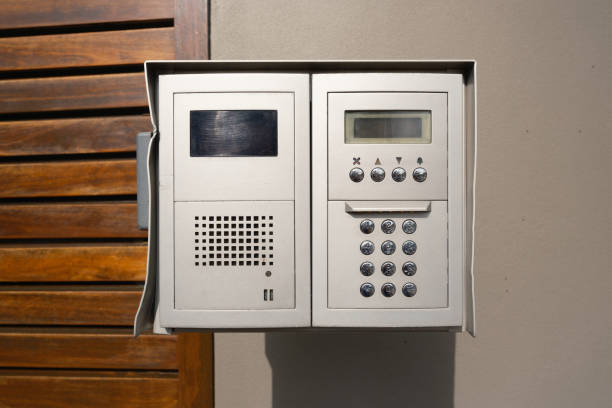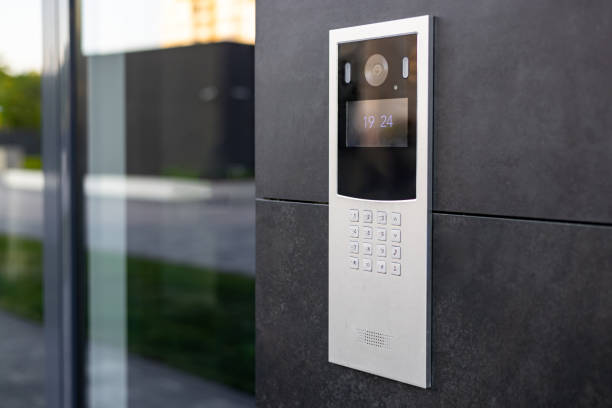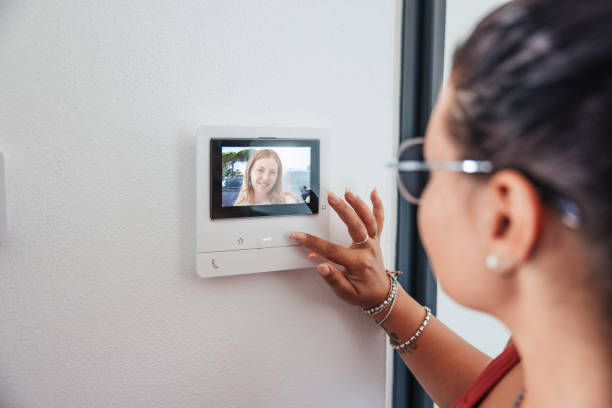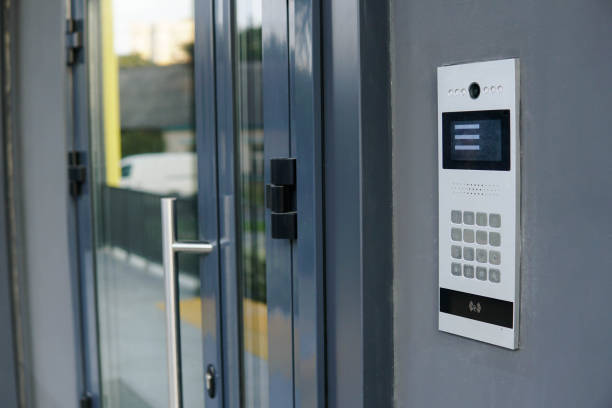Intercoms and Alarm Systems: Enhancing Security and Communication
In today’s world, security and seamless communication are essential for both residential and commercial properties. Intercom and alarm systems play a critical role in safeguarding premises, allowing users to communicate within buildings, and notifying occupants of any potential dangers. From multi-unit residential buildings to office complexes and industrial sites, intercoms and alarm systems provide reliable, real-time solutions for monitoring and communication. This guide will explore the basics of intercom and alarm systems, their types, essential features, installation tips, and some of the top brands in the industry.
What is an Intercom System?
An intercom, or intercommunication system, is a communication device that allows people within a building or facility to communicate with one another through wired or wireless connections. Intercom systems come in many forms, including audio-only systems, video intercoms, and advanced digital intercoms that integrate with other security systems. Intercoms are widely used in residential buildings, schools, hospitals, and office spaces, enabling efficient communication between rooms or different parts of a building.
Types of Intercom Systems
Different intercom systems cater to various needs and offer specific functionalities. Here’s an overview of the most common types:
- Audio Intercoms
Audio intercoms are the simplest form of intercom systems, allowing two-way voice communication between units or rooms. They’re commonly used in apartment buildings, schools, and small office settings. Audio intercoms are reliable, cost-effective, and easy to install. - Video Intercoms
Video intercoms enable both audio and video communication, allowing users to see and communicate with the person at the door or entrance. They’re widely used in homes and commercial buildings to enhance security, as users can visually confirm the identity of visitors. Video intercoms typically feature built-in cameras, monitors, and microphones. - Wireless Intercoms
Wireless intercoms use radio frequency (RF), Wi-Fi, or Bluetooth technology to transmit signals. They’re easy to install and don’t require extensive wiring, making them ideal for temporary setups or locations where cabling isn’t feasible. Wireless intercoms are popular in homes, event venues, and small businesses. - IP Intercoms
Internet Protocol (IP) intercoms use network connectivity (LAN or Wi-Fi) to transmit audio, video, and data signals. They can be integrated with existing network infrastructure and accessed remotely via smartphones or computers, making them ideal for modern smart buildings and remote access setups. - Multi-Tenant Intercoms
Multi-tenant intercoms are designed for large buildings, such as apartment complexes or office towers, where multiple users need individual intercom access. They provide communication between the entrance and each unit, with secure access options such as PIN codes, RFID cards, or smartphone apps. - Intercoms with Access Control
These systems combine traditional intercom features with access control, allowing authorized personnel to unlock doors or gates remotely. They’re commonly used in commercial and residential settings, adding an extra layer of security by restricting access to certain areas.
What is an Alarm System?
An alarm system is a security system designed to detect intrusions, fires, or other emergencies and notify the appropriate individuals or authorities. Alarm systems use sensors, detectors, and control panels to monitor and report any unusual activity, such as unauthorized entry or smoke detection. Alarms are crucial for protecting people and property, providing both immediate alerts and automated responses, like contacting emergency services.
Types of Alarm Systems
Alarm systems come in various types, each designed to handle specific security challenges. Here’s a breakdown of common alarm systems:
- Burglar Alarms
Burglar alarms detect unauthorized entry into buildings or restricted areas using sensors on doors, windows, and motion detectors. When a breach is detected, the alarm is triggered, and a loud siren sounds to deter intruders. Some burglar alarms also notify the user or monitoring service via a mobile app or alert system. - Fire Alarms
Fire alarms are essential for detecting fires early. They use smoke detectors, heat sensors, and carbon monoxide detectors to identify signs of fire or toxic gases. When activated, fire alarms notify occupants with loud alarms and may automatically alert fire departments or emergency services. - Carbon Monoxide Alarms
These alarms are designed to detect the presence of carbon monoxide (CO), a colorless, odorless gas that can be lethal. Carbon monoxide alarms use electrochemical sensors to monitor CO levels, alerting occupants if dangerous levels are detected. - Medical Alert Alarms
Medical alert alarms are commonly used in homes and facilities where individuals may need emergency assistance, such as elderly care facilities. These systems often include wearable panic buttons or wall-mounted devices that trigger an alert to caregivers or emergency responders. - Environmental Alarms
Environmental alarms monitor for issues like water leaks, humidity levels, and temperature changes. They’re typically used in server rooms, data centers, and other sensitive environments where fluctuations in conditions could cause significant damage. - Smart Home Security Systems
Smart alarm systems offer integrated security features and can be controlled via smartphones or tablets. These systems often combine burglary detection, fire alarms, and environmental monitoring, allowing users to customize settings and receive real-time alerts.
Features to Look for in Intercom and Alarm Systems
When choosing intercom and alarm systems, consider the following essential features:
- Two-Way Communication
Look for intercom systems with clear, two-way audio for seamless communication. High-quality audio ensures you can clearly hear and understand visitors or team members. - Video Monitoring
Video intercoms and alarm systems with video surveillance enhance security by allowing you to see who is at the door or monitor activity around your premises. - Remote Access
Systems that offer remote access allow you to control intercoms and alarms from your smartphone or computer, giving you flexibility and control even when you’re away. - Emergency Alerts
Alarm systems should provide immediate alerts in emergencies. Look for systems that can send notifications via SMS, email, or push notifications, as well as automatically contact emergency services. - Access Control Integration
Intercom systems with access control allow authorized individuals to unlock doors remotely. Access control can include PIN codes, biometric authentication, and smartcard systems. - Customizable Settings
Many systems offer customizable settings, allowing you to configure alerts, zones, and user permissions. This is especially useful for multi-tenant or multi-level access control. - Battery Backup
Power outages shouldn’t compromise your security. Look for systems with battery backup options to keep devices running in case of power failure. - Network Connectivity (IP Systems)
IP-based systems offer advanced connectivity options, integrating with your network infrastructure and allowing seamless management from various devices.
Installation Tips for Intercom and Alarm Systems
A well-planned installation ensures optimal performance and reliability. Here are some installation tips:
- Conduct a Site Survey
Evaluate the layout, entry points, and high-traffic areas before installation. This will help you determine the ideal locations for intercom units, sensors, and control panels. - Choose Appropriate Cabling
Select high-quality cables for wired systems, or ensure strong Wi-Fi coverage for wireless devices. Using Cat6 or fiber optic cables for IP-based systems can improve connectivity. - Position Cameras and Sensors Strategically
Place video cameras and motion sensors at key entry points, such as doors and windows, as well as in common areas. Ensure that they cover the entire area without blind spots. - Label and Organize Wires
Label each wire and organize cabling to simplify maintenance and troubleshooting. Use cable trays or conduits to keep wires neat and secure. - Secure Control Panels and Alarms
Install control panels in secure locations, away from easy access by intruders. Ensure that alarm units are easily audible in case of an emergency. - Regularly Test the System
Periodically test the entire system to ensure each component works correctly. Conduct fire drills and security tests to confirm that all alarms and intercoms are operational. - Consider Professional Installation
For complex setups, consider hiring a professional installer. This is especially important for large-scale installations with extensive wiring and integration with other security systems.
Top Brands in Intercom and Alarm Systems
Several reputable brands offer high-quality intercom and alarm systems. Here are some of the leading brands:
- Hikvision
Hikvision is known for its advanced video intercoms and surveillance systems, offering high-definition video and remote access features for residential and commercial applications. - Aiphone
Aiphone provides reliable, user-friendly intercom systems for residential and commercial use. Their products are known for durability, high-quality audio, and simple installation. - Honeywell
Honeywell is a leader in alarm systems, offering a range of solutions, including burglar alarms, fire alarms, and smart home security systems. Their products are known for reliability and extensive integration capabilities. - Ring
Ring offers video doorbell intercoms and alarm systems with smart home integration. Ring systems are popular for their ease of use, video monitoring, and remote control features. - ADT
ADT is one of the most trusted names in home security, providing customizable alarm systems with 24/7 monitoring services. ADT offers comprehensive solutions for home and business security. - Bosch Security Systems





